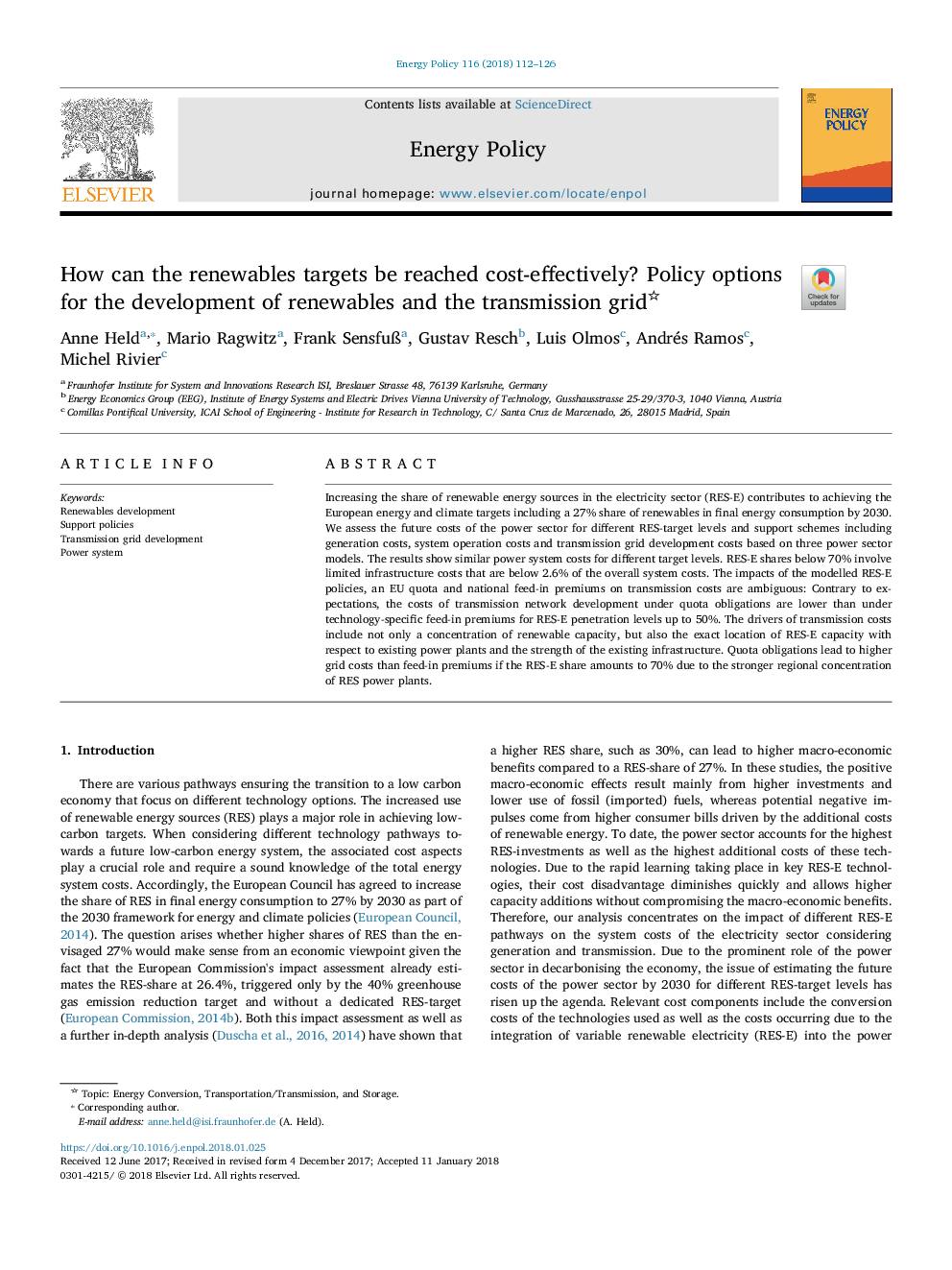ترجمه فارسی عنوان مقاله
چطور می توان اهداف تجدید پذیر را به طور موثر مقرون به صرفه انجام داد؟ گزینه های سیاست برای توسعه انرژی تجدید پذیر و شبکه انتقال
عنوان انگلیسی
How can the renewables targets be reached cost-effectively? Policy options for the development of renewables and the transmission grid
| کد مقاله | سال انتشار | تعداد صفحات مقاله انگلیسی |
|---|---|---|
| 95440 | 2018 | 15 صفحه PDF |
منبع

Publisher : Elsevier - Science Direct (الزویر - ساینس دایرکت)
Journal : Energy Policy, Volume 116, May 2018, Pages 112-126
ترجمه کلمات کلیدی
توسعه منابع تجدید پذیر، سیاست های پشتیبانی، توسعه شبکه انتقال، سیستم قدرت،
کلمات کلیدی انگلیسی
Renewables development; Support policies; Transmission grid development; Power system;

